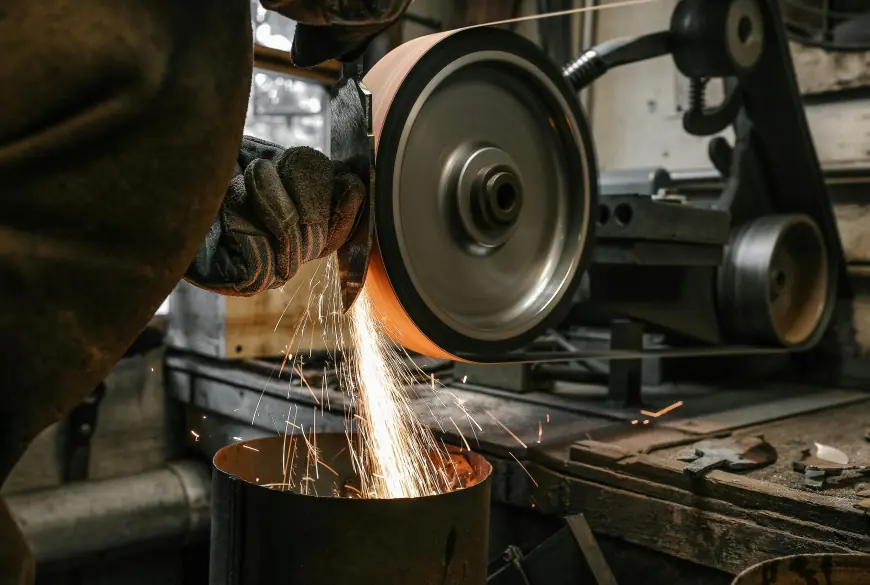A Complete Guide to Working with Sheet Metal Fabrication Manufacturers
Sheet metal fabrication plays a critical role in industries such as automotive, aerospace, construction, and electronics. Whether you're designing custom brackets, protective housings, or complex assemblies, choosing—and collaborating effectively with—a sheet metal fabrication manufacturer is vital to achieving high-quality, cost‑effective results. In this guide, we’ll walk you through key considerations, best practices, and insider tips to make the process smooth and successful.
Introduction

1. Understanding the Basics of Sheet Metal Fabrication
What It Is
Sheet metal fabrication is the process of cutting, bending, and assembling flat sheets of metal into finished components or structures. Process steps typically include:
- Cutting (laser, plasma, waterjet, shearing)
- Bending or forming (press brakes, rollers)
- Punching or stamping
- Welding or fastening (rivets, adhesives, screws)
- Surface finishing (powder coating, anodizing, plating, painting)
Common Materials Used
- Steel (cold-rolled, galvanized, stainless steel) – durable and cost-effective
- Aluminum – lightweight, corrosion-resistant, and easy to machine
- Copper, brass, etc. – used for specialized applications needing conductivity or aesthetics
Application Examples
- Enclosures for electronics
- HVAC ducts
- Machine guards and panels
- Architectural elements
- Automotive body panels
2. Planning and Preparation: Laying the Foundation
A. Define Requirements Clearly
Start with a comprehensive list of your project needs:
- Design specs: part dimensions, tolerances, material type, wall thickness
- Quantity: is it a prototype, low‑volume run, or mass production?
- Finish requirements: painted, powder-coated, brushed, anodized, etc.
- Performance criteria: structural strength, corrosion resistance, weight constraints
B. Prepare Accurate Documentation
The better your documentation, the better the result:
- CAD files (e.g. STEP/IGES for 3D parts; DXF for flat patterns)
- Technical drawings with dimensions, tolerances, notes
- Annotations for bends, holes, material properties
C. Set Realistic Budget and Timeline
- Account for tooling or setup costs especially for bending, stamping, or welding
- Factor in lead times: prototyping vs. production run vs. finishing
- Put aside a contingency (e.g., 10–20%) for revisions or unexpected delays
3. Finding and Evaluating Potential Manufacturers
A. Where to Look
- Online directories and platforms (e.g., ThomasNet, Maker’s Row, industry trade sites)
- Trade associations (e.g., Fabtech, local manufacturing associations)
- Industry referrals or case studies in your sector
B. Evaluate Capabilities
Ensure the manufacturer can meet your needs in areas like:
- Equipment: fiber laser cutting, press brakes, CNC punching, welding stations, finishing lines
- Material expertise: especially if working with specialty alloys or tight tolerances
- Certifications: ISO 9001 (quality), ISO 14001 (environment), ITAR (defense), etc.
- Scale and flexibility: ability to handle prototypes, low-volume, and high-volume runs
- Turnaround: standard lead times for quoting, prototyping, production, and finishing
C. Quality Assurance Processes
Ask about:
- Inspection methods: coordinate measuring machine (CMM), visual/dye‑penetrant, dimensional checks
- In‑process controls and quality documentation
- Traceability practices, especially for regulated industries
- Calibration schedules and compliance records
D. Request a Quote and Sample Work
Provide your project dossier and request:
- A detailed quote (material, labor, finishing, packaging, shipping)
- Example parts or references in similar size/material/finish
4. From Quotation to Final Agreement
A. Compare Quotes Thoughtfully
Beyond price, evaluate:
- Clarity: Are line items detailed, including tooling and setup?
- Consistency: Are comparable requirements being quoted similarly?
- Hidden costs: shipping, duties, rush fees, minimum order quantities
B. Negotiate Terms
You may clarify or ask for modifications on:
- Volume pricing tiers
- Setup or tooling amortization across multiple runs
- Lead time guarantees
- Reorder process and pricing
C. Contract and Communication Etiquette
Once you select a partner:
- Send a purchase order (PO) tying scope, price, timeline, and acceptance criteria
- Define communication cadence: regular check‑ins or updates at key milestones (drawing approval, first article, final run)
- Put agreements in writing (email, PO, letters of intent, contracts)
5. Streamlining the Fabrication Process
A. Design for Manufacturability (DFM)
Work with the fabricator to optimize design:
- Use bend allowances and reliefs correctly to avoid deformation
- Minimize complex edges or unnecessary bends
- Consolidate parts using strategic welding or fasteners
- Standardize materials, gauges, and finishes where possible
B. Prototyping and First Article Inspection (FAI)
- Produce a one‑off or small batch to verify fit, form, finish
- Use inspection data or photos to confirm tolerances and surface quality
- Share feedback immediately to adjust tooling or processes before mass production
C. Production Run and Quality Checks
- Institute sampling inspections or in‑process checks
- Track defect rates, scrap, and rework to identify improvement areas
- Maintain open feedback loops with the manufacturer to address issues quickly
6. Finishing, Packaging, and Delivery
A. Selecting Surface Treatments
- Powder coating: durable, uniform finish—excellent for protection and aesthetics
- Anodizing (aluminum): corrosion resistance plus color options
- Plating (e.g., zinc plating, nickel): conductive or decorative finishes
- Painting or lacquering: cost-effective, but may require curing and protection
Choose according to functional needs (e.g., corrosion resistance) and appearance.
B. Packaging Requirements
- Use protective separators (foam, plastic, paper) to prevent scratches
- Custom crating for long-distance shipping or heavy components
- Labeling for part numbers, batch codes, handling instructions
C. Shipping and Receiving
- Confirm delivery terms and Incoterms (if applicable)
- Receive and inspect goods promptly for damage or non-conformities
- Track delivery dates and reconcile against your production or project schedule
7. Building Long-Term Manufacturer Relationships
A. Communication and Trust
- Share forecasts and future project plans proactively
- Discuss new ideas or feedback openly—collaborative innovation leads to cost and performance improvements
B. Continuous Improvement
- Review project outcomes: what worked, what didn’t, and how to optimize next time
- Encourage efficiency improvements or cost-saving suggestions from your fabricator
C. Expanding Partnership
- Scale production: explore pilot-to-production transitions
- Co-develop design refinements or alternate materials to reduce cost or weight
- Engage in joint R&D for new products or manufacturing techniques
8. Common Pitfalls & How to Avoid Them
|
Pitfall |
Fix It By… |
|
Vague documentation |
Provide thorough CAD files and dimensioned drawings |
|
Ignoring manufacturability |
Ask for DFM reviews before finalizing designs |
|
Selecting based on price alone |
Evaluate quality, experience, lead time, and reliability |
|
Skipping prototypes |
Always validate via FAI to catch issues early |
|
Poor communication |
Set up clear channels and syncs throughout the project |
|
Ignoring finishing or packaging needs |
Clarify surface treatments and handling instructions ahead of time |
9. Quick Reference Checklist
- Define specs: materials, dimensions, tolerances, finish.
- Prepare accurate CAD/drawings and documentation.
- Set realistic budget, timeline, and quantity estimates.
- Research and shortlist qualified fabricators.
- Request quotes, samples, and evidence of quality systems.
- Evaluate terms, costs, and negotiate as needed.
- Execute contract or PO with expectations clear.
- Collaborate on DFM adjustments and produce prototype.
- Inspect first article thoroughly; iterate if needed.
- Produce full run, with quality monitoring.
- Handle finishing, packaging, shipping with care.
- Receive, inspect deliveries, and document feedback.
- Nurture relationship and plan for future improvements.
Conclusion
Partnering effectively with a sheet metal fabrication manufacturer is about more than hands-off outsourcing—it’s active collaboration. From crystal-clear documentation to engaging in design-for-manufacture feedback, your involvement ensures quality, timely delivery, and cost control. Build relationships, not just transactions, and you’ll benefit from innovation, efficiency, and scalability.
With this comprehensive guide, you’re equipped to navigate every phase of the sheet metal journey—from first sketch to finished product. If you'd like further assistance in refining your design, evaluating manufacturers, or exploring material options, feel free to reach out. Let's bring your sheet metal project to life!
What's Your Reaction?
 Like
0
Like
0
 Dislike
0
Dislike
0
 Love
0
Love
0
 Funny
0
Funny
0
 Angry
0
Angry
0
 Sad
0
Sad
0
 Wow
0
Wow
0

















































